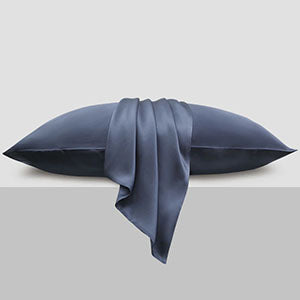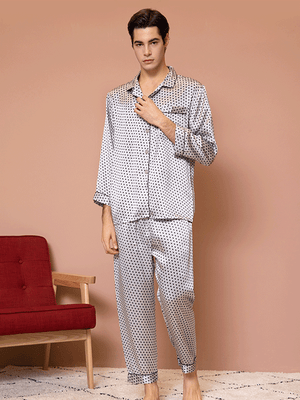Is Silk Underwear Breathable? Exploring the Comfort and Science Behind Luxurious Fabrics
- ved wangfred
-

When it comes to choosing underwear, breathability often tops the list of priorities for comfort-conscious individuals. Silk, a fabric synonymous with luxury, has long been praised for its softness and elegance. But does it live up to the hype when it comes to airflow and moisture management? Let’s dive into the science of silk and uncover whether it truly deserves a spot in your everyday wardrobe.
The Science of Silk’s Breathability
Silk is a natural protein fiber produced by silkworms, and its unique structure plays a significant role in its breathability. Each strand contains tiny, triangular prisms that reflect light, giving silk its characteristic sheen. These same structures create microscopic gaps in the fabric, allowing air to circulate freely. Unlike synthetic materials, which can trap heat and moisture, silk’s porous nature enables it to wick away sweat while maintaining a balanced temperature.
Moisture-Wicking Properties
One of silk’s standout features is its ability to absorb up to 30% of its weight in moisture without feeling damp. This makes it ideal for regulating body temperature in both warm and cool environments. When you perspire, silk pulls moisture away from the skin and disperses it across a larger surface area, speeding up evaporation. The result? A dry, comfortable feel even during physical activity.
Thermal Regulation
Silk’s breathability isn’t just about staying cool—it also excels at insulating the body. The same air pockets that promote ventilation act as buffers against external temperatures. In winter, silk helps retain body heat, while in summer, it allows excess warmth to escape. This dual functionality makes it a versatile option for year-round wear.
Silk vs. Other Fabrics: A Breathability Comparison
To understand silk’s advantages, it’s essential to compare it to common alternatives like cotton, polyester, and wool.
Cotton: The Classic Contender
Cotton is celebrated for its softness and absorbency, but it lacks silk’s moisture-wicking efficiency. While cotton absorbs sweat, it tends to hold onto moisture, leaving the fabric damp and heavy. Over time, this can lead to chafing or irritation, especially in sensitive areas.
Polyester: The Synthetic Alternative
Polyester is lightweight and durable, but its synthetic fibers trap heat and restrict airflow. Unlike silk, polyester doesn’t absorb moisture effectively, creating a sticky environment that fosters bacterial growth. This often results in odor buildup and discomfort during prolonged use.
Wool: The Insulating Option
Wool is excellent for cold climates due to its insulating properties, but it can feel bulky and scratchy against the skin. While merino wool offers finer fibers and better breathability, it still can’t match silk’s lightweight feel and temperature adaptability.
Why Breathability Matters for Underwear
Breathable underwear isn’t just a matter of comfort—it’s crucial for maintaining skin health and hygiene. Poorly ventilated fabrics create a humid environment that encourages bacterial and fungal growth, increasing the risk of infections or rashes. Silk’s ability to balance moisture and airflow helps keep the skin dry and reduces friction, making it a smart choice for those with sensitive skin or allergies.
Skin Health Benefits
Silk’s smooth surface minimizes irritation, particularly for individuals prone to eczema or dermatitis. Its hypoallergenic properties and resistance to dust mites further enhance its appeal as a skin-friendly fabric.
Odor Prevention
By reducing moisture retention, silk underwear stays fresher longer. Bacteria thrive in damp conditions, so silk’s quick-drying nature naturally combats odor formation.
Debunking Myths About Silk Underwear
Despite its benefits, silk is sometimes dismissed as impractical or high-maintenance. Let’s address common misconceptions.
Myth 1: Breathability Equals Thinness
While silk is lightweight, its breathability isn’t solely due to its thinness. The fabric’s structure and natural protein composition play a bigger role in airflow and moisture management than its weight alone.
Myth 2: Silk Isn’t Durable
High-quality silk, when cared for properly, can withstand regular wear. Its fibers are surprisingly strong, and modern weaving techniques have made silk blends more resilient without sacrificing breathability.
Myth 3: Silk Is Only for Special Occasions
Though often associated with luxury, silk’s functional benefits make it suitable for daily use. Pairing silk underwear with breathable outer layers can enhance overall comfort in any setting.
How to Maximize Silk’s Breathability
To get the most out of silk underwear, follow these care and styling tips:
Opt for Loose Weaves
Silk fabrics with a looser weave, such as charmeuse or habotai, offer better airflow than tightly knitted varieties. Look for labels specifying "breathable" or "lightweight" when shopping.
Layer Smartly
In colder months, layer silk underwear beneath thicker garments to leverage its insulating properties. Avoid tight-fitting outerwear that could compress the fabric and reduce ventilation.
Proper Care and Washing
Always hand-wash silk in cold water with a mild detergent. Avoid wringing or twisting the fabric, as this can damage its fibers. Lay flat to dry, and store in a cool, dry place to prevent mildew.
The Final Verdict on Silk Underwear
If you’re seeking a fabric that combines breathability, comfort, and timeless elegance, silk underwear is worth the investment. Its natural properties outperform many synthetic and even plant-based alternatives, offering a unique balance of moisture control and temperature regulation. Whether you’re navigating a hectic day or relaxing at home, silk’s gentle touch and functional benefits make it a standout choice for those who refuse to compromise on comfort.
Ready to experience the difference? Embrace silk underwear as your secret weapon for staying cool, dry, and confident—no matter what the day brings.












